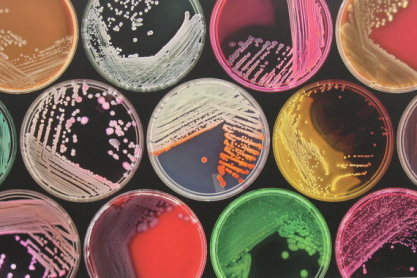Julius Richard Petri

- Born
- 31 May 1852
- Died
- 20 December 1921 (age 69)
Julius Petri was a German microbiologist whose name is perhaps more famously known for the Petri dish, the shallow plate he created for growing and studying bacteria.
Petri was born in 1852 in Germany. Aged 19 he started medical studies at the Kaiser Wilhelm Academy for military physicians in Berlin. After receiving his doctorate he became a military physician. In 1877 he got assigned as an assistant to Dr Robert Koch, a microbiologist who was attempting to isolate the different bacteria responsible for many diseases such as cholera and tuberculosis.
Koch was using thin slices of potato as naturally occurring mediums on which to grow bacteria. At this point glass bell jars were used for housing bacterial colonies. As they were so large, they had to be opened every time the bacterial dish underneath was to be examined. Because of this inconvenience dishes would often get contaminated with bacteria from the air, ruining many experiments.
Petri set out to create a dish in which the bacteria could be isolated and that allowed easy observation without the need to open the lid. It was there in the early 1880s that the now familiar low, flat Petri dish was born. Petri then used Hesse's agar medium to fill the dish with the nutrient-rich substance that bacteria love to feed on. As a result, the dish is now referred to by many names, including Petri plate and agar plate.
He was in his later days a rather vain, overweight man, who dressed in the uniform of chief army doctor whenever the opportunity presented itself. The sash around his protuberant abdomen reminded one observer of the equator around the globe.
Petri went on to do a variety of research and produce diverse publications. He was interested in the Pasteurising process, testing the quality of butter and milk and quantifying the water content in milk. Most likely influenced by Koch's work, he also carried out experiments on the spread and prevention of 'infectious diseases, especially tuberculosis' near railways.
In later years Petri ran a tuberculosis sanatorium, became a curator of the Museum of Hygiene in Berlin and was a member of the Imperial Health Office of Germany. He died in 1921 at the age of 69.




